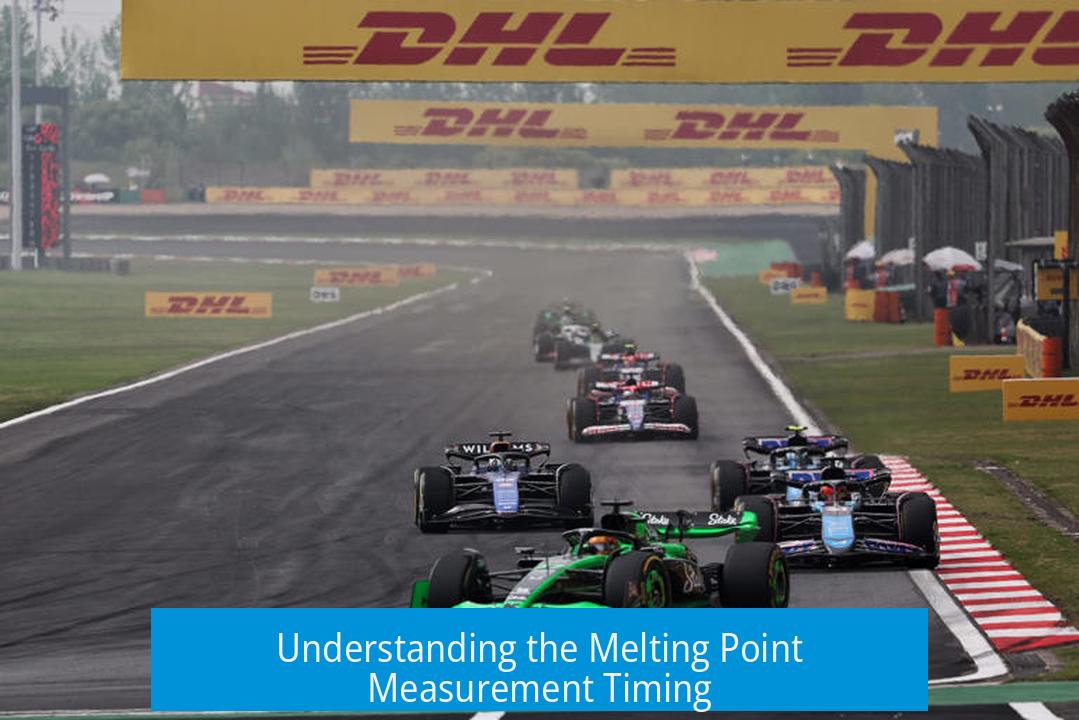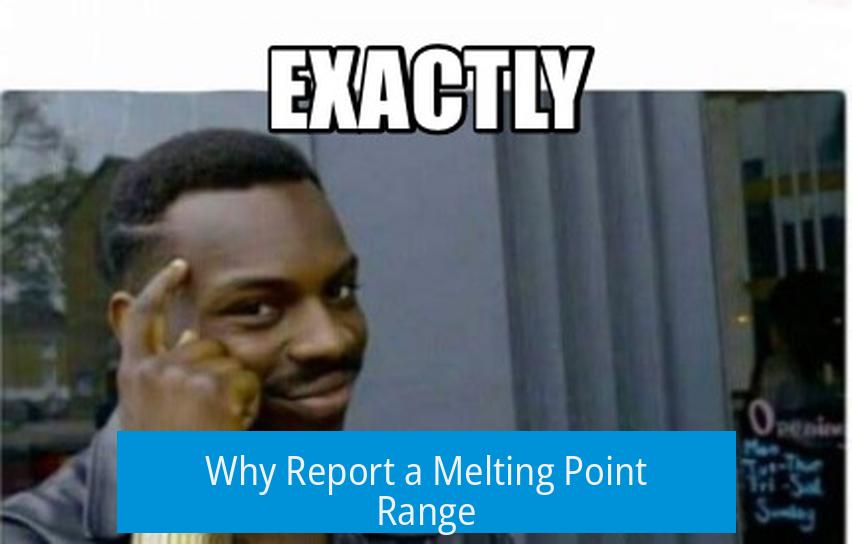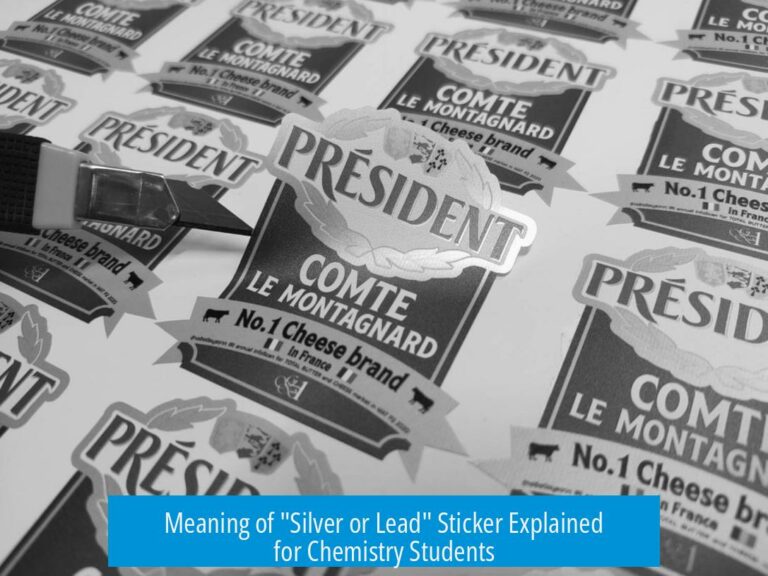When Exactly Is Melting Point Measured?

The melting point is measured beginning at the onset of melting, when the first crystal starts to liquefy, and is typically reported as a temperature range that spans from this start to the point at which the sample is completely melted. This range reflects the physical transition from solid to liquid and captures the full melting event, especially relevant for assessing purity and characterizing substances.
Understanding the Melting Point Measurement Timing

The melting point measurement marks a phase change: solid to liquid. It begins when melting first initiates and ends when melting is complete.
- Start of melting: This is identified as the temperature at which the first signs of melting appear—usually the first crystal turning to liquid.
- End of melting: This is when the entire solid sample has liquefied and no solid remains visible.
In practice, the melting point is not a single temperature but a range, especially when measured manually. This range captures variations due to purity, sample preparation, and heating rate.
Why Report a Melting Point Range?

Melting points are always reported as a range because the transition from solid to liquid occurs over a temperature interval, not at a precise singlet value, except in ideal cases of pure substances.
The general practice involves recording:
- Onset temperature: When melting visibly begins.
- Clear point: When the sample is fully liquid.
For pure compounds, this range is narrow and often less than a degree Celsius. For impure substances, the range broadens and the onset temperature lowers. Reporting both temperatures provides information about the sample’s quality and identity.
Effect of Sample Purity on Melting Point Measurement

Pure Substances
Pure samples have a sharp, well-defined melting point range. The melting process starts abruptly and completes rapidly within a narrow window. The onset temperature in pure compounds is consistent and serves as the defining melting point. For example, pure ice melts at exactly 0°C under standard pressure, and the temperature remains constant until complete melting due to latent heat absorption.
Important points about pure substances:
- Melting commences at a precise temperature.
- The temperature remains stable during the phase change.
- Sharp, narrow melting range indicates high purity.
Impure or Mixed Substances
Impurities disrupt crystalline order, causing melting to start at a lower temperature and proceed over a broader range. Identifying the melting point range helps detect impurities and estimate purity qualitatively.
- Impurities lower the onset melting temperature.
- The melting range broadens with increased impurity.
- Resulting melting points deviate from literature values.
This behavior arises because impurities cause localized melting and disorder, reducing the energy required to disrupt the crystal lattice.
Technical Approaches to Melting Point Measurement
Sample Preparation and Packing
Proper sample preparation is vital for accurate melting point measurement:
- The sample should be finely powdered.
- Even, tight packing in the capillary tube enhances thermal contact.
- Pack size influences melting observation; a tight bottom feed can sharpen early melting detection.
Grinding ensures uniform heat penetration and reduces anomalies.
Heating Rate Control
The rate of temperature increase directly affects the precision of melting point determination. A slow rate of about 2 to 4°C per minute, or even slower near the expected melting range, minimizes temperature overshoot and enables clearer observation.
Common practice involves an initial fast scan to find an approximate range, followed by a slower run for precise measurement.
Manual versus Automated Methods
Manual melting point apparatus rely on the observer’s ability to note the initial liquefaction and complete melting visually. Automated instruments use optical sensors or thermal analysis curves.
In either case, the convention remains to mark the temperature at melting onset as the critical measurement, supported by the ending temperature to establish the range.
Subdiscipline and Regional Variations
Different chemical fields and geographic regions emphasize slightly different criteria for defining melting points:
- In Europe and the UK, onset events such as meniscus formation within the sample are often used.
- In the US, full liquefaction or clear point is emphasized.
Standards such as those by ASTM provide guidelines focused on consistent and reproducible melting point criteria across laboratories.
Thermodynamic and Physical Insights
At the melting point, the heat energy input is consumed as latent heat of fusion, not increasing temperature. As a result:
- The sample temperature remains constant during the phase change.
- Melting initiates at a specific temperature where the first solid begins to liquefy.
- The temperature stays stable until the entire solid phase is transformed.
This phenomenon justifies why melting points are recorded as ranges, starting with the onset temperature and ending once complete melting occurs.
For large molecules like polymers, melting ranges are broader and less sharp. Measurement often involves analyzing enthalpy changes, but onset temperature still serves as the critical marker.
Standards and Reporting Conventions
Reliable melting point data must accompany methodological details and be reported clearly.
- Melting points are reported as ranges, specifying start and end temperatures.
- Conditions such as pressure and heating rate should be noted.
- Corrections and calibrations, if applied, must be stated.
Authoritative references include:
Understanding and applying these standards is essential for scientific communication and quality control.
Summary of Key Points
- Melting point measurement begins at the onset of melting and ends when the sample fully liquefies.
- Melting point is always reported as a temperature range, reflecting start and completion temperatures.
- Purity affects the melting range: pure substances have sharp ranges, impure substances exhibit lower and broader ranges.
- Sample preparation, packing, and heating rate critically influence measurement quality.
- Physical principles ensure temperature remains constant during melting due to latent heat absorption.
- Different regions and subdisciplines emphasize variations on defining melting point but agree on using onset temperature primarily.
- Standards and precise reporting conditions are necessary for reliable melting point data.
When Exactly Is Melting Point Measured? The Definitive Guide
Alright, let’s cut to the chase. The melting point is measured when a substance starts to melt, marking the onset of the melting process. For chemists, students, and lab enthusiasts, that initial drip or crystal liquefying is the golden moment. But wait – there’s more nuance here. Melting points aren’t some magic number pulled from thin air; they tell a story, often as a range, unveiling purity, composition, and thermal behavior. So let’s unpack it all.
Ready to dive into the exact moment and method of measuring melting points? Grab a beaker (figuratively) and join me.
Melting Point: The ‘Start’ Matters Most
If you picture heating a solid substance, the “melting point” is not a single, sudden event but a gradual transition. The **exact moment to snag the melting point** reading is when that first sign of liquid appears. This onset — when the first crystal turns into a droplet or the sample’s edge starts to liquefy — defines the melting point’s lower bound. It’s like the first crack of dawn in the temperature timeline.
The ASTM (American Society for Testing and Materials) agrees. They describe the melting point as the “lowest temperature before the temperature rises,” which essentially means catching it right as the solid lets go. For manual tests, you watch the tiny crystal marching toward liquid freedom and record that initial melting temperature.
A simple rule of thumb from chemistry courses worldwide: note the temperature when any part of your sample begins melting. Because if you don’t, you might miss the point entirely. That “point” is a vital characteristic, telling you about the purity and identity of your compound.
The Melting Point Range: From First Drip to Liquid Liberation
Now, if melting were always a single, sharp event, science would be way too easy. Reality kicks in, and melting spans a temperature span — a range. It starts when melting begins and ends when the entire sample is liquid. This range often spans just a degree or two for pure substances but can stretch wider for impure samples.
Why a range? Because it’s physically impossible for solid crystals to vanish in an instant. First, some crystals begin obediently melting, then others reluctantly follow. The melting range comprises two vital temperatures:
- Onset temperature: when the first sign of melting appears.
- Clear point: when the sample becomes completely liquefied.
Chemists typically record both, and if you’re feeling fancy, you compare these numbers to literature or standards—domains where every decimal counts. For example, one chemist shared that in practical work, they “usually record both then compare to literature.” Good practice if precision is your thing.
Purity’s Fingerprint: Sharp Melting Points or Wide Melting Ranges?
The shape of your melting point range reads like pure chemistry poetry. Pure substances tend to have narrow, sharp melting ranges. You can expect that if your sample is pure, its crystals all melt around the same temperature, resulting in a tight range, sometimes less than 1°C wide.
Impurities, on the other hand, meddle with the party. They lower the melting point and broaden the range — sometimes dramatically. So, when you heat a mixed or impure compound, the melting starts early but stretches out, making the melting process a drawn-out affair. A wider melting range often signals contamination, incomplete reactions, or subpar purity.
Here’s a quick guide:
| Purity Level | Melting Point Range | Implication |
|---|---|---|
| Very Pure | Very narrow (1-2°C or less) | High purity; well-defined phase transition |
| Moderate Purity | Moderate range (2-5°C) | Some impurities or mixed phases |
| Impure / Mixed | Wide range (>5°C) | Contaminated or unknown composition |
Notice anything? Melting points double as a quick quality control tool, revealing if your sample is the real deal or suspect. Missing deadlines to purity verification? The melting point might save you.
The Science Behind the Scene: Thermal and Physical Principles
Ever noticed that the temperature *pauses* at melting? It doesn’t climb up quietly as the sample liquefies. That’s because the energy you’re pumping in channels into transforming the solid into a liquid — this is the latent heat of fusion. So, the temperature hovers, steady, during the entire melting process.
Pure substances exhibit this clearly. The temperature plateaus at the melting point until the entire sample melts, then it can climb again. This plateau is the foundation of why melting points get reported as ranges—the start and end points technically can share the same temperature but in practice, the observed onset and completion mark the range.
For instance, with pure ice at standard pressure, it sits stubbornly at 0°C during melting. That’s your textbook example of latent heat and phase equilibrium in action.
Measurement Methods Matter: How and When You Record Melting Points
Knowing exactly when to start measuring isn’t just theoretical. It depends on your lab finesse, instrument, and methodology.
- Sample preparation: Crushing or grinding solid samples evenly ensures heat penetrates uniformly across the small crystals. Uneven heating can lead to sloppy melting points.
- Heating rate: Heating too hot, too fast can blur the melting range, while slow heating (2–4°C per minute or slower) provides clearer, more precise readings.
- Manual observation: You watch the sample in a capillary tube, noting when first liquid appears and when it finishes melting.
- Automated or instrumental: Advanced thermal analysis instruments detect melting through enthalpy changes or isothermal plateaus, sometimes defining onset by the TMA (Thermomechanical Analysis) curve or DSC (Differential Scanning Calorimetry) data.
Many chemists do a quick “fast run” first, roughly locating the melting point, followed by a slower, more careful run to confirm accuracy within 1°C. This fine-tuning method is a little like running a rehearsal before the final act.
Variations Around the Globe and in Special Materials
Fun fact: “Melting point” isn’t always defined identically worldwide. For instance, in the US, some protocols emphasize the liquid state — when the whole sample is completely melted. Across the pond in the EU or UK, the focus may lie on the meniscus forming, the point just as the liquid droplet starts shaping.
For materials like polymers or edible oils, things get complicated quickly. Polymers don’t have single-point melting; their melting range often spans a wider spectrum, reflecting complex molecular interactions. Their melting point might be described as the “turning point of the enthalpy change.” In food science, fats might have several melting points due to the mix of fatty acids.
So, when working with complex blends or big molecules, the “exact” moment to record isn’t as straightforward and usually goes back to the onset of physical changes like deformation or liquid formation.
Standards, Reports, and Transparency
Back in undergrad labs, you probably learned to paint your melting point as a neat range. But it gets technical fast:
- Melting points get reported with specific conditions, like pressure and calibration status.
- “Corrected” vs “not corrected” melting points reflect if instrument bias or environmental factors were accounted for.
- Official references like the CRC Handbook, ASTM, and IUPAC establish precise definitions to keep everyone on the same page.
For more detailed reading and official standards, check out these treasure troves:
- Melting Point Application Notes from SRS
- Thermal Values & Melting Point Determination – Mettler Toledo
- IUPAC Gold Book Definition of Melting Point
Why Does All This Matter?
Understanding *when exactly* the melting point is measured helps ensure your results are valid and comparable. Whether you’re proposing a new synthetic compound, testing a drug, or evaluating a material’s purity, a melting point is your thermal fingerprint.
It affects quality control, identity confirmation, and functional properties. Recording the onset ensures you capture that fingerprint correctly. Missing this can lead to misinterpretation, wasted experiments, or worse, faulty products.
Takeaways and Practical Tips
- Focus on the onset: Your melting point reading starts the moment the first crystal melts.
- Report a range: Include the temperature when melting finishes for the full story.
- Mind sample purity: Narrow ranges indicate purity; broad ranges scream impurity.
- Go slow on heating: Raise temperature by no more than 2-4°C per minute for precise results.
- Use proper sample prep: Grind well and pack tubes consistently.
- Compare with literature: Always benchmark against standard melting points when possible.
So, the next time you gaze at a melting sample, remember this: melting point measurement is an art and science. It kicks off at the *start of melting*, continues through a range, and tells tales of purity and phase transitions—all in a single, temperature-driven moment.
What’s your experience with melting points? Ever been surprised by impurities or ambiguous ranges? Share your stories and questions below!
When is the melting point of a pure substance typically measured?
It is usually measured at the temperature when the first crystal starts to melt. This is called the onset of melting. For pure substances, the melting point is sharp and recorded at this initial melting.
Why is melting point often reported as a range instead of a single number?
The melting point covers from when melting begins to when the entire sample is liquid. This range accounts for gradual melting, especially in impure or mixed substances. Reporting a range gives a clearer picture.
How does impurity affect the timing of melting point measurement?
Impure samples melt over a broader temperature span. The start of melting occurs earlier and the complete liquefaction happens later. This results in a wider melting point range compared to pure substances.
What is the recommended procedure for accurately measuring melting point?
Slowly heat the sample at 2-4°C per minute, watch for the first sign of melting and continue until fully liquid. Grinding the sample fine helps even heat penetration and precise observation of melting stages.
Do melting point measurement criteria differ by region or sample type?
Yes. For example, in the US the melting point is noted when fully liquid, while in Europe it may be at the meniscus forming. Polymers show broad ranges, measured at enthalpy change points rather than onset alone.





Leave a Comment